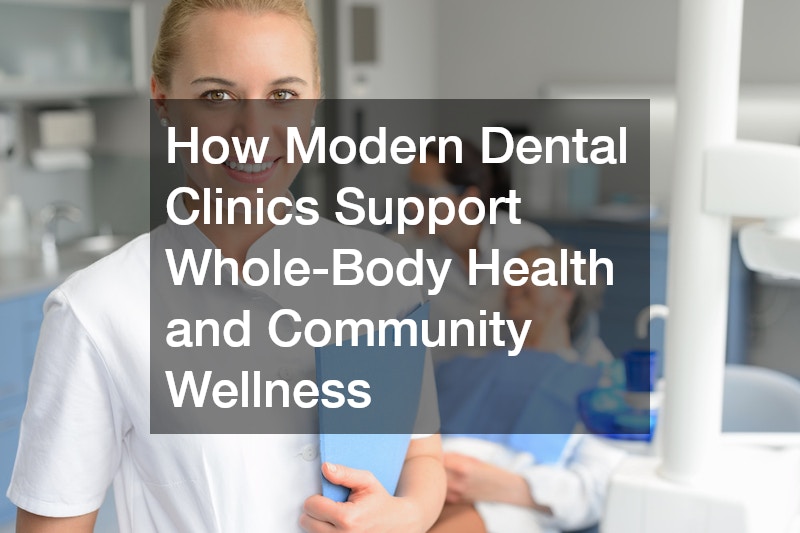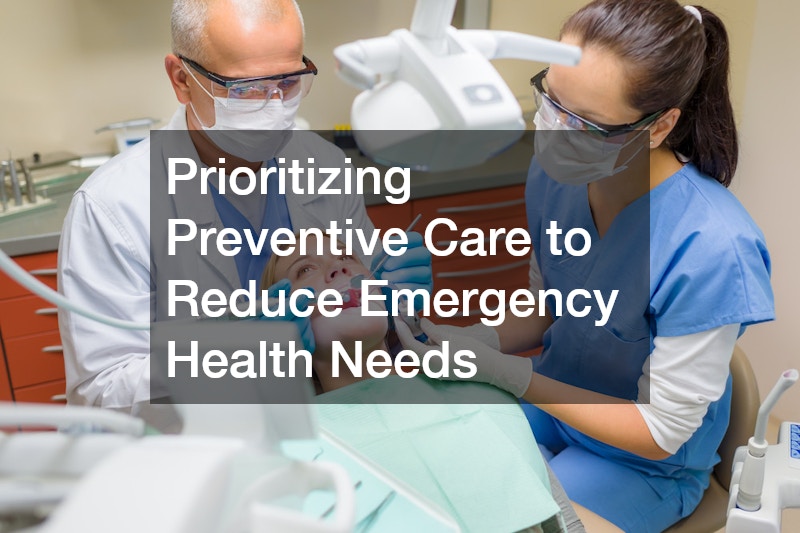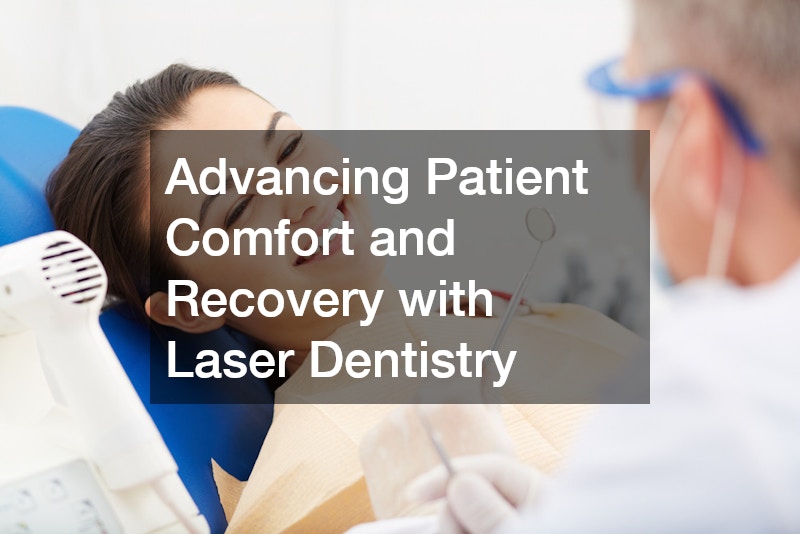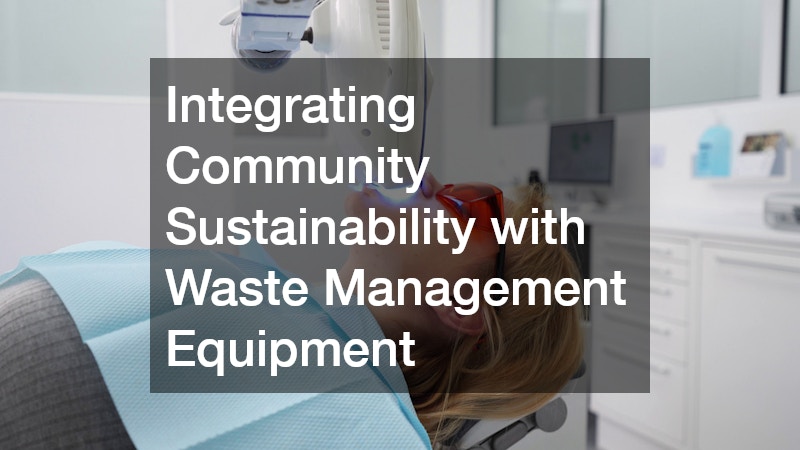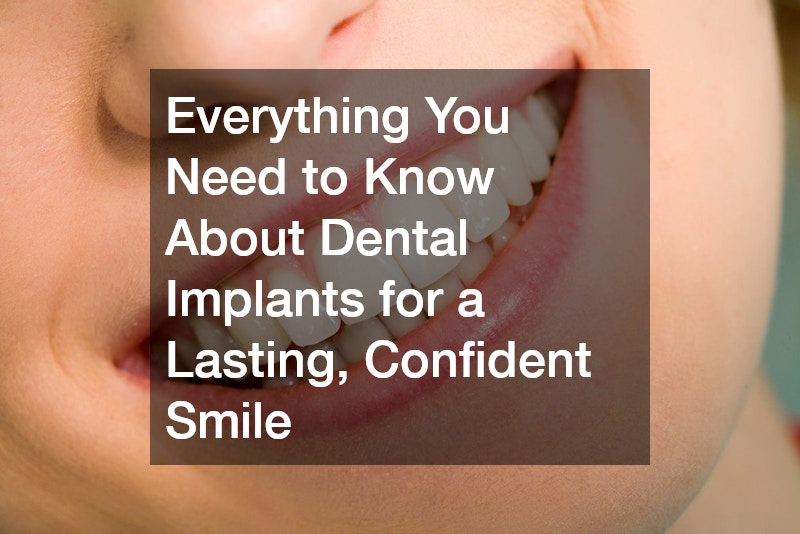
Modern dental care has transformed from a narrow focus on oral hygiene to a cornerstone of whole-body wellness and community health. Today’s dental clinics combine advanced technology, sustainable practices, and holistic care models to improve not just smiles but lives. By addressing the links between oral health, systemic conditions, and even local environmental health, these practices contribute to healthier, happier communities.
The growing recognition of oral-systemic connections—how gum disease relates to heart health, how jaw alignment affects posture, or how hydration impacts oral tissues—means that dental care now plays a crucial role in preventive medicine. Patients increasingly view their dental providers as partners in lifelong wellness. Let’s explore how modern dental clinics are supporting not only individual patients but also the broader well-being of the communities they serve.
Prioritizing Preventive Care to Reduce Emergency Health Needs
Preventive dentistry forms the foundation of whole-body health. By focusing on early detection, education, and routine care, clinics help patients avoid complications that might otherwise require urgent care or hospital visits.
Dentists routinely check for issues such as gum inflammation, oral cancer, and infection—conditions that can have serious implications if left untreated. These early interventions prevent systemic inflammation and reduce the risk of chronic diseases like cardiovascular illness or diabetes-related complications.
To strengthen prevention programs, modern dental practices often provide:
- Comprehensive health screenings: Blood pressure, oral cancer checks, and TMJ evaluations help detect broader health concerns.
- Nutritional counseling: Patients learn how diet influences enamel strength and gum resilience.
- Customized hygiene plans: Tailored routines and product recommendations maintain results between visits.
When dental issues are treated early, patients avoid painful emergencies, minimize healthcare costs, and experience better long-term wellness outcomes—illustrating how prevention is far more powerful than cure.
Supporting Structural and Muscular Balance Through Proper Alignment
Dental professionals now recognize that oral alignment is essential to both oral and overall physical health. Misalignment doesn’t just affect the way teeth look—it impacts how people chew, breathe, and even carry themselves.
Poor alignment can cause chronic headaches, neck tension, and jaw pain, all of which interfere with quality of life. Modern clinics address this holistically, using digital imaging and bite analysis to ensure that each adjustment supports both function and comfort.
Key benefits of alignment correction include:
- Reduced risk of temporomandibular joint (TMJ) disorders
- Improved digestion due to more efficient chewing
- Better posture and reduced strain on facial muscles
- Clearer speech and enhanced confidence
By integrating orthodontic evaluation into general dental care, clinics help patients achieve harmony between teeth, muscles, and skeletal structure—showing how oral precision supports total body balance.
Ensuring Safe and Sustainable Practices Through Quality Water Systems
Few patients think about the water flowing through a dental chair, yet quality water is critical to patient safety. Dental procedures depend on sterile, contaminant-free water for rinsing, cleaning, and instrument maintenance.
Modern dental clinics use advanced filtration and disinfection systems that meet strict health standards. These systems eliminate harmful bacteria from waterlines, reducing cross-contamination risk and promoting cleaner, safer care environments.
Beyond safety, water quality also plays a role in environmental and community health:
- Eco-conscious systems reduce waste and chemical runoff.
- Regular testing ensures compliance with state and local safety regulations.
- Patient education promotes awareness about hydration and fluoride benefits.
When dental clinics safeguard their water systems, they’re not only protecting patients but also supporting public confidence in sustainable, responsible healthcare operations.
Advancing Patient Comfort and Recovery with Laser Dentistry
The introduction of laser dentistry has revolutionized the patient experience. Lasers allow dentists to perform procedures with precision, reduced pain, and faster healing compared to traditional methods.
For soft-tissue treatments, lasers seal blood vessels immediately, minimizing bleeding and swelling. For hard-tissue work, such as cavity removal or enamel contouring, lasers reduce the need for drills and anesthesia.
Benefits of this technology include:
- Shorter procedure times and faster recovery
- Less discomfort and anxiety for patients
- Lower risk of infection and post-procedure complications
- Enhanced accuracy in targeting problem areas
From gum contouring to root canal sterilization, laser tools elevate the standard of care, demonstrating how technology can improve both outcomes and patient trust.
Enhancing Long-Term Oral Function and Confidence Through Braces
Corrective orthodontic treatment, particularly braces, plays a vital role in maintaining oral and systemic health. Straight teeth aren’t just about appearance—they’re easier to clean, less prone to decay, and promote balanced jaw function.
Misaligned teeth can create uneven bite forces, leading to premature wear and muscle strain. Braces correct these issues, supporting both form and function. Modern options, such as clear aligners and ceramic systems, provide aesthetic flexibility for patients of all ages.
Braces contribute to overall wellness by:
- Improving chewing and digestion efficiency
- Preventing gum recession linked to overcrowding
- Reducing risk of tooth decay and gum disease
- Supporting better speech clarity and facial symmetry
By investing in orthodontic solutions, dental clinics empower patients to experience lifelong improvements in oral hygiene and overall comfort.
The Expanding Role of the Orthodontist in Holistic Health Care
The modern orthodontist functions as a key figure in comprehensive health management. Their work extends well beyond aesthetics—many now screen for issues like airway restriction, sleep apnea, and jaw development problems in children.
By identifying skeletal imbalances early, orthodontists can correct conditions that influence breathing, digestion, and even neurological function. Interdisciplinary collaboration with pediatricians, ENTs, and chiropractors ensures that patients receive truly holistic care.
Examples of this integrated approach include:
- Early intervention programs to guide jaw growth naturally
- Airway-focused orthodontics that improve sleep quality
- Postural assessments to align bite and spine function
As orthodontists adopt a more health-centered model, they help patients build stronger foundations for both oral and systemic well-being.
Integrating Community Sustainability with Waste Management Equipment
Modern dental practices also play an important role in environmental stewardship. By using specialized waste management equipment, clinics minimize their ecological footprint while ensuring safety and regulatory compliance.
Dental waste can include everything from amalgam fillings containing mercury to disposable materials and sterilization byproducts. Proper handling of these materials is essential for preventing contamination.
Responsible clinics implement programs such as:
- Amalgam separators that capture mercury safely
- Reusable instrument cassettes to reduce disposable plastics
- Autoclave waste systems designed for minimal environmental impact
This commitment to sustainability demonstrates how dental practices contribute not just to individual health, but to the environmental well-being of their entire community.
Promoting Health and Cleanliness Through Local Garbage Pickup Service Partnerships
Dental clinics depend on local infrastructure to maintain a clean, safe environment. Collaborating with a garbage pickup service ensures that waste materials are handled efficiently, reducing risks of contamination and infection.
Effective waste collection supports hygiene both inside and outside the clinic. It also reinforces a clinic’s role as a responsible business within its community.
Examples of effective sanitation efforts include:
- Partnering with certified waste handlers for biological materials
- Coordinating frequent pickups to maintain sterile conditions
- Participating in local recycling and compost initiatives
By prioritizing cleanliness and proper disposal, dental clinics set an example of civic responsibility and reinforce the idea that health begins with a clean, organized environment.
Expanding Treatment Options with Safe and Effective Injectables
Incorporating injectables into dental care is a growing trend that reflects a shift toward total facial wellness. Dentists trained in facial anatomy are uniquely equipped to deliver treatments such as Botox or dermal fillers safely and effectively.
These treatments can relieve TMJ discomfort, reduce muscle tension, and enhance facial symmetry following restorative or cosmetic procedures. For many patients, injectables are not just about appearance—they improve comfort and quality of life.
Benefits include:
- Alleviation of jaw pain caused by clenching or grinding
- Reduction of chronic headaches and migraines
- Non-surgical facial rejuvenation that enhances dental results
This integration bridges medical aesthetics with functional dentistry, providing comprehensive care that aligns with modern expectations for whole-body wellness.
Extending Compassionate Care to Animals Through Pet Dental Cleanings
Whole-body health extends to the animals who share our homes and communities. Dental clinics increasingly collaborate with veterinary professionals to support pet dental cleanings and raise awareness about animal oral health.
Pet owners often underestimate how oral bacteria can affect their animals’ organs, leading to kidney, liver, or heart issues. By educating owners about signs of dental disease and preventive measures, clinics contribute to both animal welfare and public health.
Ways dental practices support pet care initiatives:
- Partnering with local shelters for low-cost cleaning clinics
- Hosting pet dental awareness events in the community
- Sharing educational resources about brushing and diet for pets
These partnerships strengthen the bond between veterinary and human healthcare, reflecting a holistic vision of wellness that includes every member of the family.
Modern dental clinics have evolved into holistic centers of wellness, bridging personal health, environmental sustainability, and community well-being. By emphasizing prevention, investing in advanced technologies, and collaborating across disciplines, these clinics contribute to a healthier, more connected society.
From laser tools that minimize pain to partnerships that promote sanitation and sustainability, today’s dental practices serve as models for modern healthcare integration. Their work extends far beyond treating cavities—they’re building healthier communities, one patient and one practice at a time.
